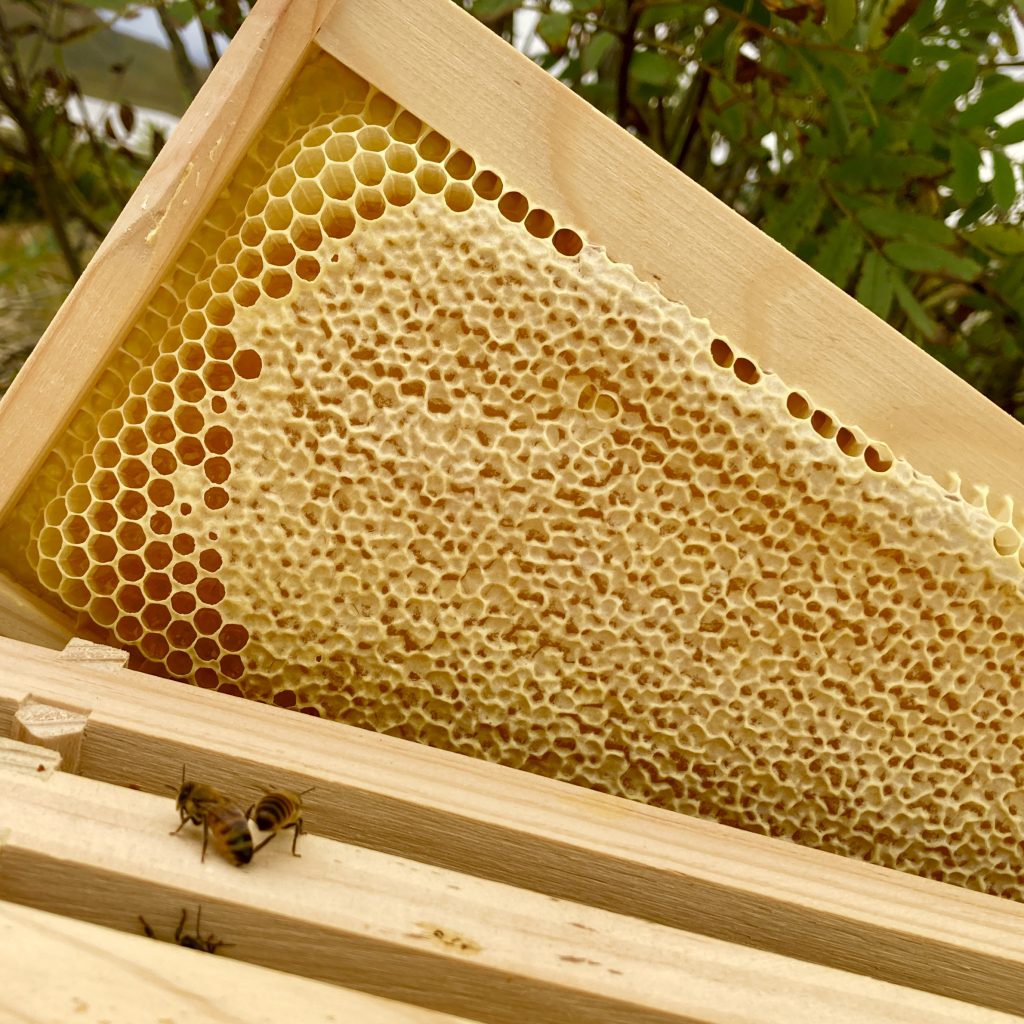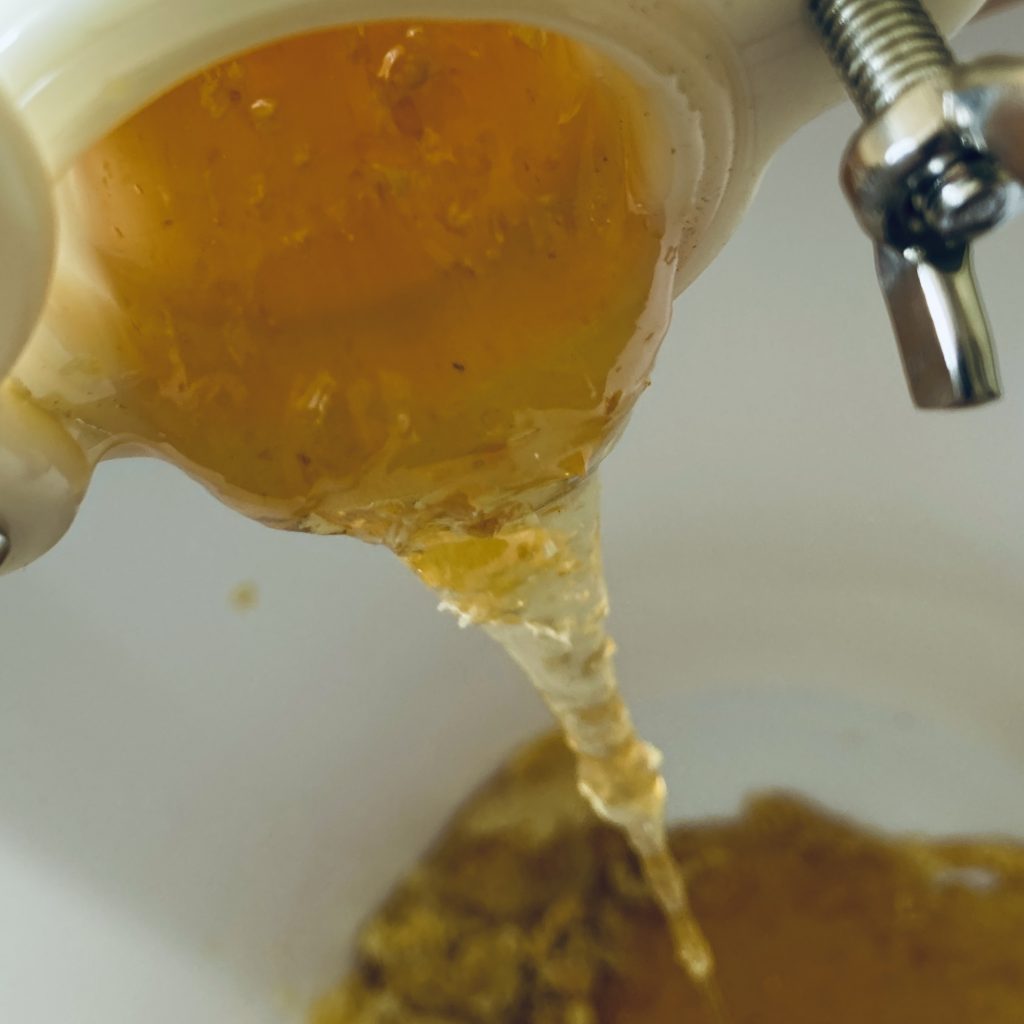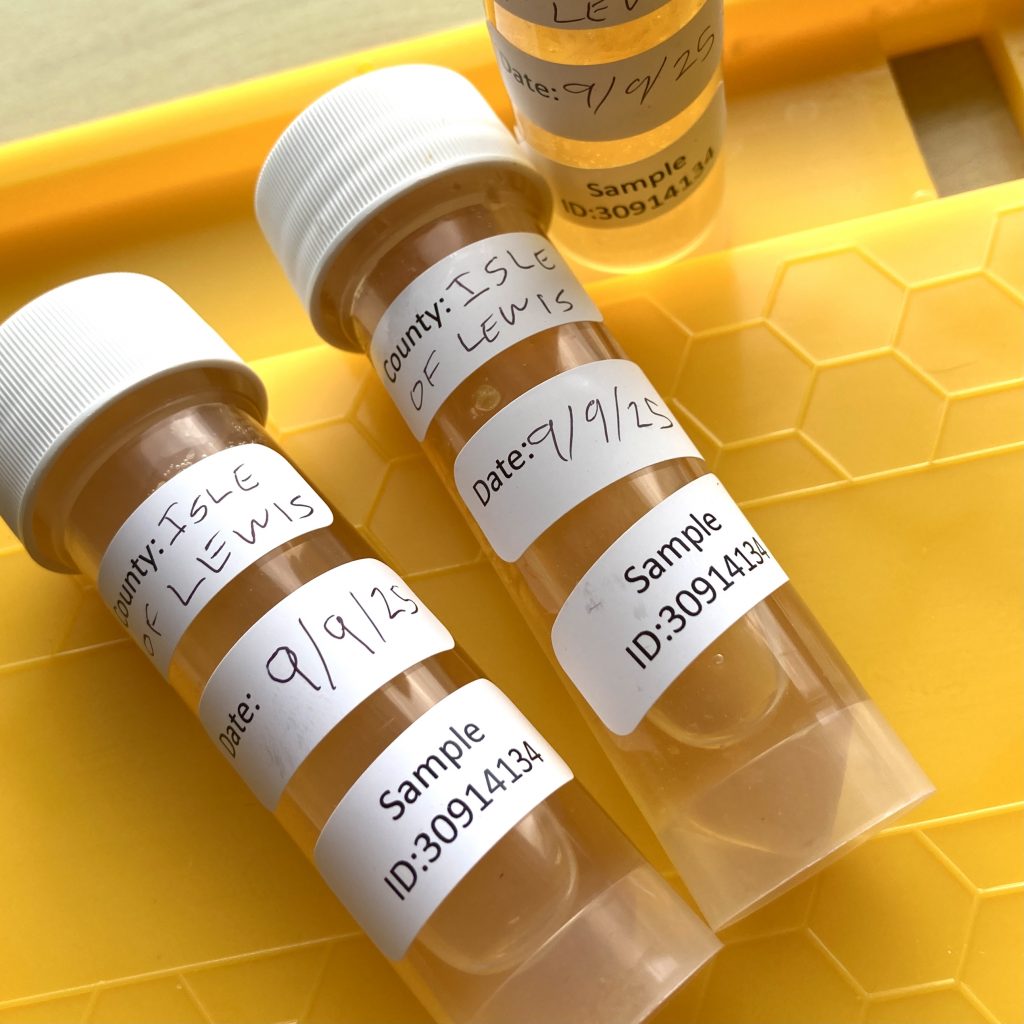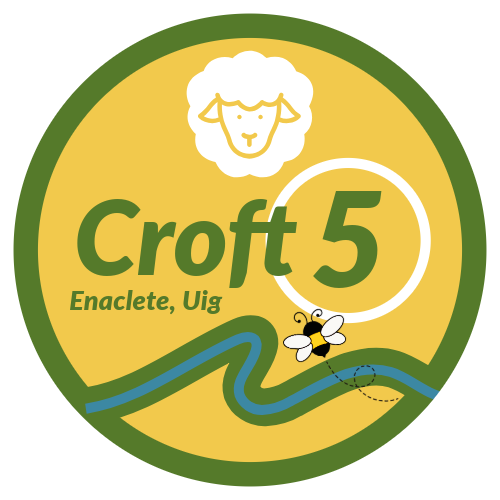Hi Honey!
September has been a mixed month. The winds have increased and the sunny days are equally broken by days of rain. It has also been a mixed month for the bees and the beekeeper.
September found a box of capped honey on hive one which was ready for the extractor! I wasn’t expecting to harvest any honey this season but the bees have been busy with their production . There is a second brood box on this hive which is also starting to fill up with stores for winter, so I didn’t feel guilty removing this bonus crop as a beekeepers treat.
Decision made, and it was on with the clearer board (a board with a one way hole in it, which allows the bees to move down from the box of honey but not back up. A couple of days later the box was clear of bees and the frames of honey ready to be taken.

Extracting the Honey
Extracting the honey was a sticky affair. Once the wax capping are broken each frame is placed in a spinner where the honey is flung out from the comb. Here is is drained from the extractor and through a sieve to remove any wax capping, before being left to settle in a bucket for a few days.
There wasn’t a huge harvest this season. In reality the bees have only had three months to settle in, establish a colony, find the forage and start producing. So this really was a bonus surprise. Hive two started later and has gone through a similar process, but they haven’t produced a surplus of honey in this shorter time and so they will get to keep all of theirs to feed on through the winter.
The smell is of heather, yet the flavour is more floral with a very slight citrus note. It is not over-sweet, but is full of taste! With some of the honey decanted into sample pots and the rest stored in glass jars I am excited to have a reasonable supply to see me over winter. Some of the sample pots have been given out to friends and local producers and I am hoping that I can work with them next season to incorporate Hebrides Honey in their Hebridean produce!

National Honey Monitoring Scheme
Speaking of samples, I have also contributed three test tubes of honey to the National Honey Monitoring Scheme
This scheme has been open since 2018 and the purpose is to monitor the state of the countryside from sampling honey. The samples are analysed for the pollen which indicates the species of plants available in a given area. They can also detect traces of pesticides that may have been picked up by the bees.
There is currently no data from the Outer Hebrides and so I hope Hebrides Honey can be the first, and possibly furthest, data set from the islands! It shall also be interesting to see which flowers the bees have been foraging from and, hopefully, a low to no level of pesticides compared to the more heavily farmed areas of the mainland. The results, like the honey, take time to produce so I don’t expect to be able to share the findings for a couple of years.

When September Ends
Summer has come and passed. Autumn has arrived and aside from extracting honey there are other jobs to do. The mite boards went in again and I am pleased to say that there were no varroa mites present. At this stage it looks like the bees won’t require any treatment for varroa mites, however I shall continue to monitor them monthly. As an isolated apiary with bees that display varroa sensitive hygiene characteristics it is feasible that they will not suffer the same problems as many colonies on the mainland.
There are other pests and problems that haven’t affected the bees like many of beekeepers have suffered on the mainland. For example, the invasive, non-native Asian Hornet has not reached this far out yet, and wasps have not been a problem for my bees this season. Despite the challenges of beekeeping on the Isle of Lewis there are advantages to the wild remoteness of the island.
It’s also the time to begin supplemental feeding. Now that the honey has been extracted (and so won’t be contaminated with processed sugar) I can provide the bees with a mix of heavy sugar syrup which they shall store in the brood box to add weight for winter. They are still bringing in small amounts of pollen however it’s important that the hive is full and heavy if they are to turn out strong in the spring. Alongside the drop in forage the weather is also going to restrict what is naturally available. I’ve taken the decision to feed them weekly, through September and October. This way they aren’t left to gorge all of the syrup at once and will encourage them to forage/leave the hive when the weather permits. I feel like this way of feeding replicates that which they are used to. With days of heavy feeding interspersed with days of no food or forage.
The drone bees have also been exiled as they serve no purpose of the winter (their only purpose is to mate with flying queens through the spring and summer) consuming valuable resources and contributing nothing. They don’t even resort to caretaking duties! At this stage the queen is likely to be laying eggs ready for winter bees. These bees have higher fat stores with the purpose of living longer through the winter and contributing to the warmth and survival of the queen.
What was (or wasn’t) present this month:
- Exiled drones
- No varroa mites
- A box of honey!
Learning Points for September
So what did September show us?
- It’s a busy month for the beekeeper!
- The honey is fantastic
- The principle of honey production in the Outer Hebrides has been proven
- Despite the challenges, there are advantages to keeping bees in the Hebrides!
Don’t forget to keep up to date with Hebribees Honey on Facebook. The content is about the honey so like and follow to never miss a jar!

Leave a Reply